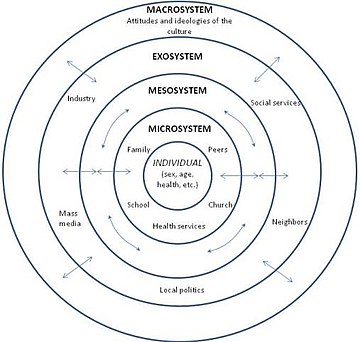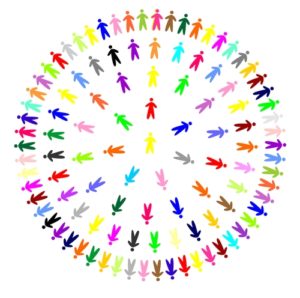Social work practice approaches are highly influenced by theory. The psychodynamic theory is something that helps us explain and predict human behavior. In task centered practice, systems theory, theories shape many courses and programs. Transpersonal theory helps us understand that a person is a product of their social environment at multiple levels of that environment.
Early in their studies, students of social work learn about the centrality of systems theory in policy practice, including assessment and treatment. In addition, social work is unique, compared to other behavioral sciences, in its emphasis on psychosocial theory and the person in environment perspective.
History of Social Systems Theories
Systems theories emerged from general psychodynamic theory which rose to prominence within the psychological and natural sciences in the early twentieth century. Available systems theory considered the whole of whatever was being examined as more than the sum of its parts. General systems theory looks at how factors affect the whole system or organism.
Scientists in fields as diverse as physics and psychology began using systems theories to understand the world around them. There was great interest in the stability of systems and input, output, and feedback loops in systems.
By the mid-twentieth century, social scientists, psychologists, and social workers widely used general psychodynamic theory and systems thinking to develop specific ideas for understanding and addressing individual and social problems. Systems theories rebuttal to the prevailing belief of psychodynamics and other theories that individual dysfunction and psychological issues originate mainly within the individual.
Systems theories held that individuals could not be viewed as islands. Instead, they are parts of groups, organizations, societies, and families. Furthermore, individual problems shape and influence many levels of an indivdual’s ecology.
Specific Systems Theories Used in Social Work
complex system theories help social workers understand many social problems, including family problems, child abuse, community dysfunction, and issues affecting individuals such as anxiety, low self-esteem, and relationship problems. Specific rational choice theory based on systems theory have emerged to help social workers understand and address individual and social issues. For example, family systems theory, developed by Bowen (1946), views the family as a complex system with its parts and feedback loops. Bowen developed eight interlocking concepts of family systems that practitioners could use to enhance family functioning.
The Life Model of Social Work Practice
The model of social work practice (Germain & Gitterman, 1980) is influenced by psychosocial theory thinking. The original model emphasized an approach with individuals, groups, families, and neighborhoods. But, social work was revised to emphasize policy practice and policy advocacy. The ecological theory or social learning theory also influenced the model of social work practice by emphasizing the exchanges between people and their environments” (German, 2017).
The life model requires the practitioner to examine a person’s environment and adapt to and cope with limitations and toxicity in one’s environment. Additionally, the model may look at people in organizational environments or communities.
The model requires clinicians to examine critical events in an individual that may have impacted his development and attitudes, such as major life transitions, periods of increased environmental stress, or changes in relationships. Groups and organizations may support or hinder a person during these critical transition periods. These include family at the micro-level and schools at the mezzo level. The model also looks at how critical historical events and societal changes influence generational cohorts.
The Socio-Ecological Development Model

The socio-ecological development model is another specific social work practice theory based on systems thinking. This model looks at how multiple systems and levels of the social environments (individual, micro, meso, Exo, and macro-systems) impact individuals’ experiences and behavior. For example, the micro-level is the location of intimate and family relationships, the meso-level is the location of institutions and organizations, and the macro-level is the location of society-wide factors such as culture or laws, all of which shape who we are and how we develop.
Social Work Approaches Informed by Social Systems Theories
The socio-ecological model can understand the challenges individuals face at multiple levels of their social ecosystem and develop therapeutic interventions and programs that address these problems. For example, consider the issue of child abuse and neglect.
For instance, risk and protective factors will significantly influence child outcomes at each level of the social ecosystem. Therefore, understanding the risk (e.g., poverty, mental illness) and protective factors (e.g., extended solid family bonds, positive school environment) at each level of a family’s ecosystem is critical to treating the child and working with the family.
Socio-Ecological Theories
The social-ecological development model can also be used to understand why parents abuse or neglect their children. Socio-ecological theories of why child maltreatment is perpetrated acknowledge the complexity of the social problem in a way that cognitive behavior theories may not.
For example, a social worker might provide individual and family counseling (micro) or parenting classes (mezzo) to address a parent’s neglectful behaviors. He might also advocate for increasing government spending on afterschool programs, daycare, or mental health clinics as a preventive measure.
Complex system theories can also be used to understand and address violence. The United States Centers for Disease Control has officially endorsed a socio-ecological violence prevention model. The four levels of the CDC model are individual, relationship, community, societal.
The CDC supports the design of both communities, interpersonal and family violence prevention programs. According to the CDC, “in o “der to prevent violence, social work is necessary to act across multiple levels of the model simultaneously. This approach is more likely to sustain prevention efforts over time than any single intervention” (CD,” 2019).

Multisystemic Therapy
Multisystemic Therapy is another treatment approach informed by transpersonal theory that has been used to address child and youth mental health problems, juvenile delinquency, and substance abuse. MST requires therapists to treat the whole family unit system and treat the child at multiple levels of his and his family unit system (e.g., school, family members, peers, school, social support system) in the home and other community locations.
Finally, work with underserved and marginalized communities may also be informed by the life model of social work practice which, as noted above, looks at, among other things, the effects of community problems and governmental policies on individuals and communities. For example, using the life course model, a social worker might lobby the government to enact social policies and programs that help underserved communities, mobilize organizations and stakeholders in addressing community-wide problems, and garner resources needed by the community (Gitterman, 2017).
Strengths and Weakness of Social Systems Theory
Social systems practice approaches are at the heart of social work. It helps social workers look beyond the individual to understand factors at multiple levels of clienclients’al systems that may be contributing to their struggles. Social learning theory approaches empower practitioners to address challenges at various levels of clienclients’al environments. Policy advocacy and community work are essential facets of social practices informed by systems thinking.
A drawback of transpersonal theory as used in social work is that a psychological approach is sometimes needed for treatment; for example, an individual with severe mental illness may primarily need individualized psychotherapeutic counseling and perhaps medication.
Furthermore, interventions and programs informed by psychodynamic theory are not always easy to evaluate. There are many moving parts to a systems treatment approach, and it may be challenging to identify which components of treatment are working. Furthermore, social workers are supposed to consider an indivindividual’so and the macro environment when using systems approaches. Still, some social workers may lack the cultural competency to understand a client and cultural background.

Systems Theories Practice
Taken altogether, social learning theory and approaches are central to social work. There is enough evidence that many programs and interventions using systems theory approaches effectively address various presenting problems and challenges in the lives of our clients. Therefore, social work students should be well versed in complex systems ideas and practice approaches.
What is an example of systems theory?
Systems theory in social work is created by an array of different factors that work together as a system. This can include a child or adult’s parents, school, friends, life at home, economic level, and several other factors.
If there are missing parts of the system or if some are ineffective, a social worker can assist to correct the issue. The result of a system that is working is that it will have a positive effect on the behavior of the person. This is due to the fact that a system has an effect, positive or negative, on a person’s behavior overall.
An example of this would be a person who is addicted to heroin. A social worker then finds out that the young woman was abused sexually by a relative.
This is a breakdown in the woman’s system that helped to facilitate her drug use. By getting the proper help for the young woman, such as therapy and drug rehabilitation, she has a chance of changing her negative behavior to positive behavior. Social workers are tasked with providing the services and positive role models that can assist people in creating much more supportive systems for themselves.
What are the key points in system theory?
When it comes to system theory, the key points include that an effective system for a person is based on that person’s individual needs. In other words, a system must meet the needs of the person involved. This can also include expectations, rewards, and attributes of the other people living within that particular system.
In social work, systems theory can be influenced by an array of different factors that are working together within that system. These key factors include family, friends, economic level, social settings, and the home environment. These are all factors that can influence a person’s behavior and thought processes. It is the social worker’s job to try to balance the system when it is broken so that it can be improved to help meet the needs of the individual social workers are working with.
What are the advantages of system theory?
When it comes to social work, there are many advantages of system theory. Putting together a family story can assist a social worker immensely in determining where the problems lie that need to be resolved. It’s important that a social worker understands each of the different parts of the family system to be able to help the family become healthy again.
System theory offers insights for social workers that show a person can break harmful habits and behaviors. The person just needs more insight and the correct tools to help them navigate through the systems that social workers are living in. social workers helping a person break away from an unhealthy system is very rewarding for that person’s social worker.
- human behavior in systems theory
- mental health professionals
- crisis intervention model made by the social workers
- social justice lead by social workers
- economic class practice models for systems theory
- practice models for systems theory
- psychosocial development in systems theory
- apply systems theory
- psychosocial development theory
Related:


